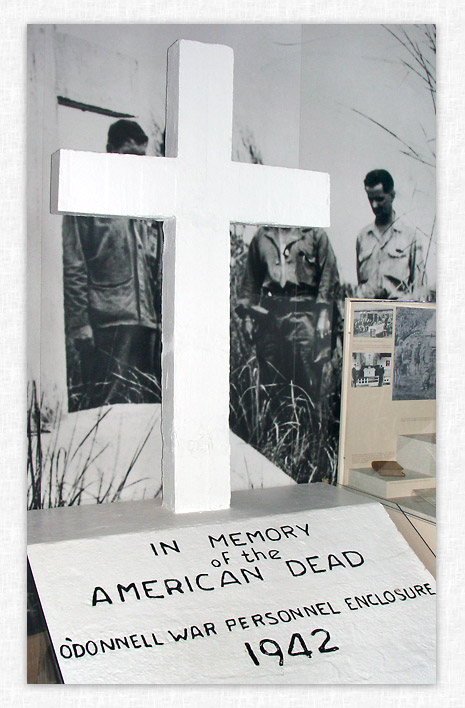

|
After the fall of Bataan in 1942, 50,000 American and Filipino survivors became captives of the Japanese at Camp O'Donnell; Luzon, Philippine Islands. As exhaustion, disease and starvation killed hundreds of men each day, the Japanese presented Captain Wilson, the American supply officer with a "present." The present: a sack of cement; the command: "Now, courtesy of Imperial Japanese Army, you make shrine for men who die." And so, in memory of their fallen comrades, and in defiance of the Japanese (who no doubt expected a Shinto Shrine) the Americans built a cement cross. Fittingly, the inscription did not contain the word "prisoner," reflecting the men's refusal to concede anything to their captors. It was this kind of spirit that sustained hundreds of POWs during their captivity. This same spirit drove the survivors of Camp O'Donnell to insure that the cross, which had been preserved by the American Battle Monuments Commission, had a permanent place of honor at Andersonville.
[The Cross] symbolizes the determination and faith in their country of the American men who refused to give up, no matter how grim the outlook. - Col. John E. Olson, USA (Ret.) |
POW Museum US Military Gallery 3 US Military Gallery 2 US Military Gallery 1 Home
| Credits: Camp O'Donnell Cross; photo by © Eric Shindelbower; image may not be reproduced without prior written permission of the photographer.
National Prisoner of War Museum
Background pattern courtesy of © IconBazaar.com |